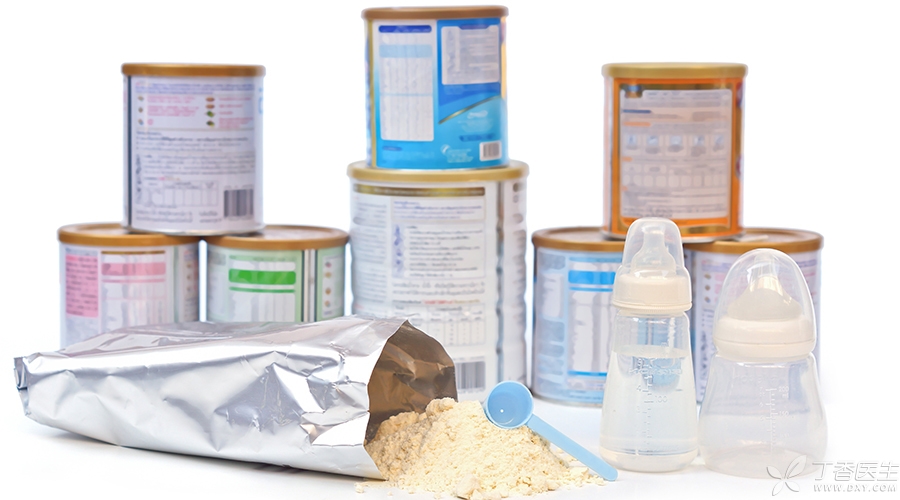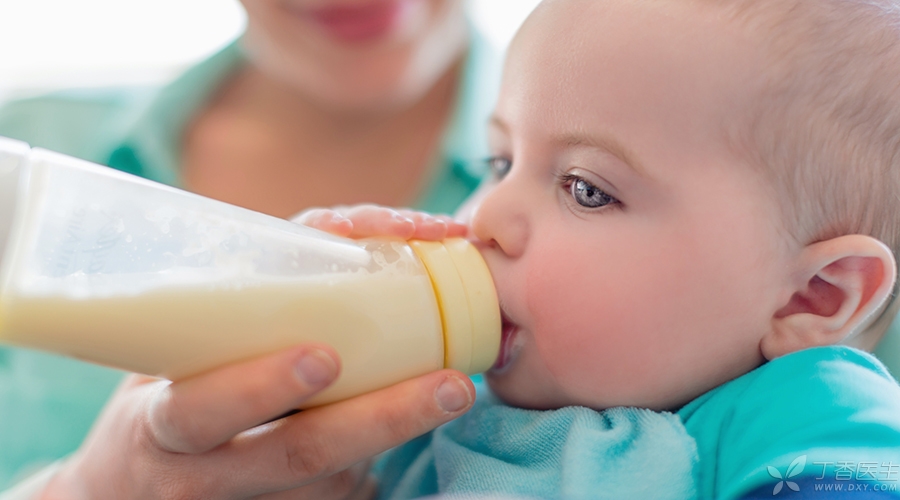
The word food allergy must not be too strange to everyone. I believe many people will have some friends around them who will be allergic to certain foods, such as seafood, mango, eggs, milk, etc.
Of course, the simplest and most effective way to deal with food allergy is to avoid eating foods that cause allergy.
But what should I do if the baby who needs milk powder is allergic to formula milk powder?
Why are you allergic to traditional formula milk powder?
Traditional formula, also known as breast milk milk powder, is made from milk as raw material to imitate the ingredients of breast milk, so the main ingredient in formula milk powder is still milk protein from milk. If the baby is allergic to milk protein, then he is likely to be allergic to traditional formula milk powder.
According to the results of epidemiological surveys in many countries, the proportion of milk allergy in children under 4 years old is close to 2%, and milk is one of the most common food allergens.
Babies are allergic to traditional formula milk powder for the following reasons:
1. Genetic factors in infants and young children
The occurrence of food allergy has obvious individual differences and genetic tendencies. Some babies are naturally susceptible to allergy and are naturally allergic to traditional formula milk powder.
There is no way to change a situation like this.
2. Food sensitization
Allergy to traditional formula milk powder is actually allergy to some of its ingredients, and the most common is allergy to milk protein, the main ingredient in traditional formula milk powder.
Milk protein itself has strong sensitization and is easy to cause allergic reactions.
3. Infant reactivity
Babies will only show allergic reactions to milk allergens after exposure. The severity of allergic reactions mainly depends on the baby’s sensitivity and physical condition.
When the baby’s sensitivity is relatively high or his physical condition is relatively poor, serious allergic reactions may occur after only a small amount of contact.
4. Special Physiological Factors of Infants
Adults have a layer of defense system in the gastrointestinal tract that can limit the absorption of food allergens to a certain extent, thus reducing allergic reactions.
However, this layer of defense system in the digestive tract of infants is not fully developed, so it is very easy to absorb food allergens and allergic reactions will occur more easily.
With the growth of the baby’s age, the defense system in the digestive tract gradually develops and matures, and the phenomenon of food allergy will gradually improve.
What are the manifestations of allergy to formula milk powder?
When the baby is allergic to formula milk powder, the following manifestations may occur:
Skin manifestations: erythema, rash or swelling in pieces (mostly on the skin of face, neck, ears and other parts), and sometimes itching, dandruff, scratching, etc.
Oral manifestations: erythema on lips, tongue and oral mucosa, oral ulcer, etc.
Gastrointestinal reactions: nausea, vomiting (such as frequent milk vomiting), diarrhea, etc., may lead to poor nutritional status, anemia and other manifestations for a long time.
Respiratory tract manifestations: Always involuntarily rub the nose, or sneeze, runny nose, cough, etc. Some will have hoarse voice, shortness of breath, wheezing, and even dyspnea when crying.
Other manifestations: Babies are easily agitated and cry. Some will fart more, and the baby’s crying will ease after farting.

What if the baby is allergic to formula milk powder?
If the baby in the family starts to add formula milk powder and has some of the above-mentioned manifestations, or parents find some special abnormal manifestations, they can make a simple food diary to facilitate the doctor’s diagnosis when the symptoms are not particularly serious and they have not seen a doctor.
It mainly records the specific types of food the baby eats during the day and how much each kind of food he eats, the relationship between food consumption and the occurrence of those symptoms in time and the interval time, etc.
If the baby has some of the above-mentioned symptoms after eating the formula milk powder, and the symptoms are obvious or the parents themselves preliminarily judge the symptoms to be serious, they can stop feeding the formula milk powder. And go to the hospital allergy department (allergy department) or pediatrics department as soon as possible.
After the specialist perfects each examination and determines the cause of the disease, the specialist will give corresponding treatment.
If milk protein allergy is confirmed, traditional formula milk powder should not be fed until milk protein tolerance is confirmed, so as to avoid more serious allergic reaction.
There are different types of milk powder that can replace traditional formula milk powder, and which one to replace needs to be guided by doctors.
Partial hydrolyzed protein formula (also known as moderate hydrolyzed formula) is suitable for babies with mild allergy to milk protein.
Deep hydrolyzed protein formula milk powder is suitable for babies with moderate to severe allergy.
Amino acid formula milk powder is suitable for babies with severe allergy.
Lactose-free milk formula, in which maltose or glucan is used instead of lactose, while protein, fat and other ingredients are still the ingredients of milk formula, so it is suitable for babies who are only lactose intolerant and have no milk allergy.
Symptoms of lactose intolerance are directly proportional to the amount of lactose ingested, so it is rarely necessary to completely remove it from the diet.
Soymilk formula milk powder is a specially manufactured formula milk powder based on soybean. The protein is mainly soybean protein, and methionine and taurine are also added.
This formula of soy milk is different from soy milk and soybean flour that have not been specially manufactured. It is more suitable for the growth and development of babies, but it is not suitable for long-term consumption.
Goat’s milk or mare’s milk formula is a formula based on goat’s milk or mare’s milk. If babies who are allergic to milk protein are not allergic to goat’s milk or mare’s milk, they can use this formula instead.
However, it should be noted that there are reports that 30% ~ 40% of babies allergic to milk will also be allergic to goat’s milk and soy milk.
Babies are allergic to milk protein, can they never drink milk?
Most babies who are allergic to milk can heal themselves, that is, they are tolerant to milk.
The age of tolerance varies from person to person. Tolerance usually begins after the age of 3. By the age of 12, 64% of children can tolerate milk protein, but the specific time varies from person to person.
If you want to give your baby milk or replace it with ordinary milk powder, you need to have a corresponding examination before that.
If the examination results show that the baby’s allergy degree has decreased and the original allergic reaction is not serious, you can try to eat some foods containing milk ingredients to help the baby tolerate milk protein.
If the original allergic symptoms are very serious, and now the examination results show that the degree of allergy has decreased, it is also necessary to try to add milk or replace ordinary milk powder under the guidance of allergy specialists.
At the same time, it should be noted that babies who are allergic to milk have a relatively higher risk of other allergies, so when babies eat high-protein foods that they have never eaten before, it is better to start from a small amount and slowly increase day by day, and also pay attention to observe whether the babies can tolerate them.
